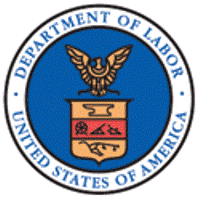
By Kristin Cifolelli, courtesy of SBAM Approved Partner ASE
In 2016, the U.S. Department of Labor will recalibrate the Salary Level test that determines eligibility for exemption from minimum wage and overtime requirements of the Wage and Hour law. The change would raise the salary level from the current $23,660/year to the proposed $50,400/year. The result will be an increase in the number of non-exempt employees who were previously treated as exempt. There is also speculation that some of the duties tests will be changed as well.
In preparation for these changes, proactive HR professionals should not only review salary levels of their positions to determine if there is any impact, but also do something more basic: they should do a thorough review of all job descriptions to determine if the duties described accurately reflect the work being performed.
Here is a quick review of the key elements in a good job description and the best practices associated with writing them:
- Job Information – The job description should contain the job title, name of the department, reporting structure and date the description has been updated. The job title should accurately describe the type of work that is being performed. A mistake some employers make is to use a lofty title to try and enhance the perception of the position. Also take into consideration how the title used will be viewed both within and outside the organization. Using job titles that are vague or too company-specific may make it difficult to attract job applicants.
- Exempt/Non-Exempt Status – This will identify whether the role is exempt or non-exempt from overtime requirements. Avoid the most common mistake employers make on this issue: Do not let the job title determine the exempt/non-exempt status of the job. Analyze all the duties and responsibilities (see below) carefully before you make this decision.
Because the new regulations will be coming out soon, this will perhaps be the most important piece of information on the job description. As such, it should really be entered last even though it typically goes near the top of the document.
- Summary – A brief overview of the position and its purpose should be provided. This should be no longer than 2-3 sentences.
- Duties & Responsibilities – This section should identify key high priority and high frequency duties the employee will be expected to perform. It is not meant to be an exhaustive list of every task being carried out. Employers should also consider providing estimates of the percentage of time spent performing each of the key duties listed. Tasks that take the most amount of time should be listed first. The description should be written based on actual duties being performed, not ones the employer hopes the employee will grow into down the road. This is another area where employers often get into trouble with job misclassification. This section should define which job duties are considered essential and non-essential. (This will also help employers to comply with requirements of the Americans with Disabilities Act [ADA].)
Employees in the job position should be asked to review and edit the draft job description. There is no better way to get an accurate view of the position than to ask the person who is actually performing it. In addition, supervisors and managers should also review the draft job description before they are finalized to make sure they are in agreement.
On the other hand, recognize also that the incumbent employee will be naturally tempted to inflate the scope or importance of the individual tasks on this list. Discuss this with the employee and listen to his or her point of view. But use good judgment; in the end you, not the incumbent, must choose the most accurate language for the entries in this section.
- Requirements – This section should summarize the knowledge, skills, and abilities required to perform the job, and should reflect the minimum necessary qualifications. If employees in a position do not meet the minimum requirements, the requirements may be set too high and need modification. Education, certifications, training requirements, minimum work experiences generally are included.
- Working Conditions – Any particular working conditions and/or physical demands should be detailed, for example if there are requirements for lifting, bending, doing repetitive tasks, long hours of standing, driving etc. Other key points to consider include travel requirements, hours worked, start time/end time, overtime requirements, specifications for breaks/lunches.
- Disclaimer – At the bottom of every job description it should be clear that it does not contain every duty the employee will be performing. Employers will want to set expectations that they have the flexibility to add or modify job duties as needed. Recommended language includes stating at the bottom of the job description “This position may be required to perform other job duties as needed”.
Note that the question of whether the FLSA tests will also be impacted by these final regulations is still up in the air. To play it safe and assuming they are, identify which exempt jobs are doing less than 51% exempt work and recognizing that those jobs, even if the salary test is met, may be a risk to the organization.
Reviewing all of your job descriptions may be a daunting task. But the pending new DOL regulations make it one of the more important jobs you can do in the coming weeks and months.